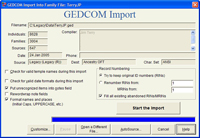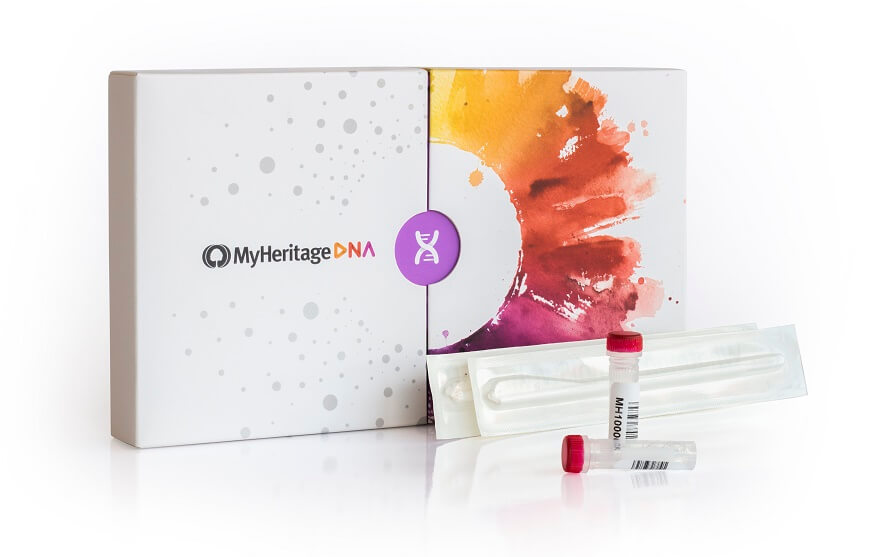 Having worked in the genealogy industry for many years now, I come across many people who have often heard of ‘GEDCOM’, but really don’t know what it is, how it works or understand the importance of it.
Having worked in the genealogy industry for many years now, I come across many people who have often heard of ‘GEDCOM’, but really don’t know what it is, how it works or understand the importance of it.
Firstly what is GEDCOM?
GEDCOM is an abbreviation that stands for GEnealogy Data COMmunications. In short,it is the language (file format) by which different genealogy software talk to one another. All recent genealogy software supports GEDCOM imports and exports.
Why do I need to know about it?
Can you imagine spending years and years typing in thousands of names, dates, places, and citations, only to find out that when you upgrade your trusty five-year-old desktop computer to a new swish little laptop you have to update your genealogy software too? Then you find out, your genealogy program won’t work on Windows 7 (or has since been discontinued) … what do you do? Would you consider starting all over again? If you have your files saved into GEDCOM you won’t have to!!
If this happens to you, the first step to do, is to save your current files into GEDCOM, because if your files are in this format you can then bring them into ANY current genealogy software. Then secondly look for another program (I won’t go into that here as that’s post for another day – but we do sell a range of genealogy software).
Another reason to know about GEDCOM, is that if you wish to send copies of your genealogy data to your reli’s who are also researching the family, there is a good chance that they may not be using the same program as you, so to be sure they can read it – the saftest way is to save your file as a .GED, and send that.
Another thing you will need to you know about GEDCOM is that it is good, but not perfect. Not all the data fields in a genealogy program are specified precisely in GEDCOM. Or your present genealogy program might be perfectly happy with a birth date listed as, “after 1847 but before 1852”. However once that information is exported to a GEDCOM file and then imported into a family tree program, the birth date may say something else, or typically is left blank. Despite all the shortcomings, GEDCOM is still a simple and somewhat effective method of transferring genealogy data from one program to another. Most of the data will transfer properly, and then there are easy ways of reviewing the data to look for errors.
Generally names, dates, places and relationships do transfer without a problem, text, events, notes and source citations may not always work perfectly. The exact problems encountered will depend upon the two genealogy programs involved. But for a family tree of 1000’s using GEDCOM to transfer your data still saves a lot of work, although retyping from scratch also does have its merits too.
 How do I save my file into GEDCOM?
How do I save my file into GEDCOM?
Without going into the specifics of each program, if you are wanting to save your file into a .GED format to send to a relative (or just for your own backup of course), this is usually done by going to the top bar of your program, click on File, then scroll down to something like ‘Export to’ or ‘Save As’ (programs do vary their wording, but they’re generally all pretty similar), then follow the prompts. If it isn’t obvious, press the F1 (Help) key, and search for GEDCOM.
When saving your GEDCOM file, the really important thing to know is “where” you are saving your file, as you will need to access that file sometime, so you will need to find it.
When should I save my file?
This is entirely up to you, as it also depends on how much work you do on your tree. Personally I backup my file into GEDCOM format everytime I do any work on it, some would suggest once a week, others once a month. I’ve also heard a number of bad news/good news stories of people who’s computer crashed and lost all data, only to then be able to recover most of it from recent backups or GEDCOM files. So it really does pay to take to extra time to have good backups.
Hopefully this gives you a brief introduction, and underlines the importance of having your file backed up in both your genealogy program’s normal format, and also GEDCOM.
Happy researching!!









Hi,
I have been trying to locate my GEDCOM file here on Ancestry for several days with no success. I believe I uploaded it several years ago as Mazofred.ged when I was an active member. I have seen parts of my family tree here on Ancestry so I know I uploaded it to you.
My old computers crashed shortly after I uploaded my GEDCOM due tto a Trojan horse. I now have a new computer and would like to resume my Genealogy efforts. I have been declared leagally blind so my navigation about the screen is sometimes difficult. Thank you for any help you can provide.